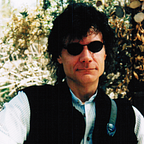This is a depressing, mostly unsatisfying review of the challenge that global warming poses. Additional, global-level possible solutions are considered by its author, but you may not be fully persuaded by the solutions as framed in this text.
No matter. You must read this book anyway.
Sedjo’s credentials are impressive (shared the Intergovernmental Panel on Climate Change Nobel Peace Prize), but the writing doesn’t have the readability and narrative integrity of, say, an Elizabeth Kolbert, who also writes in this space. As a result, when Sedjo claims that the Paris Agreement is inadequate, the argument seems at one time both unsurprising and yet alarming.
You read on, but doggedly so. It’s mandatory homework. Study, or doom many species of flora and fauna to extinction. And that’s just the beginning.
He argues that greenhouse gas reductions are insufficient, and that the proposed metrics under the Paris agreement fail to cover important topics such as geoengineering, urban adaptation to alternative sources, reductions in global reflectivity (albedo) using aerosols. Sedjo’s argument studies the Mount Tambora 1815 volcanic eruption as a possible example. Aside: for a sample academic take, see papers such as Achmad Djumarma Wirakusumah and Heryadi Rachmat 2017 IOP Conf. Ser.: Earth Environ. Sci. 71 012007.
Landscapes such as grasslands, snow and prairie reflectivity, he argues, should be considered along with other methods — even though it has what he says in an interview “has little policy relevance.” For urban areas, he says, the discussions tend to cover open space and tree planting but ignoring albedo effects.
Sedjo’s general thread, or “Plan B,” is to pursue greenhouse gas reduction a la Paris Agreement, but that other meta-approaches, really big approaches, should also be considered.
The index, footnotes and references in this book were only partially satisfactory. (To learn why, read on.)
RECOMMENDED Get this book anyway, despite these limitations, The topic is too important to ignore “what else we need to be doing,” even if the arguments are only partially persuasive.
This nonfiction genre: Awkward at best
This sort of book awkwardly straddles genres between TLDR essay and academic text. The classic TLDR essay is the sort you’ll find in Harpers, Atlantic, New Yorker, and many others. The genre is characterized by lightweight citations — if any citations are provided at all, and an editorial stance that everything must be explained without external references (i.e., assume lazy readership). Instead of citing papers, the author mentions the researcher’s affiliation — as if that makes the work more credible. Footnotes, if provided, may not be inline. Yes, you can read endnotes at the end of a chapter, but good luck connecting them all to the relevant claims in the body of the work. The academic genre solves these problems, but likely cites more references than most readers have access to, and will often cite concepts and principles that are highly domain specific — which means readers better have Wikipedia open and ready.
If forced to choose, pick the academic genre. The long form essay format (taking to book form, as is the case with Surviving Global Warming) serves certain rhetorical purposes and is a more accessible story format, but is ultimately unsatisfying for discerning readers — especially for challenges as dire as global warming. This may serve Amazon’s bookseller purposes (more books!), but your intellectual task will feel incomplete.
